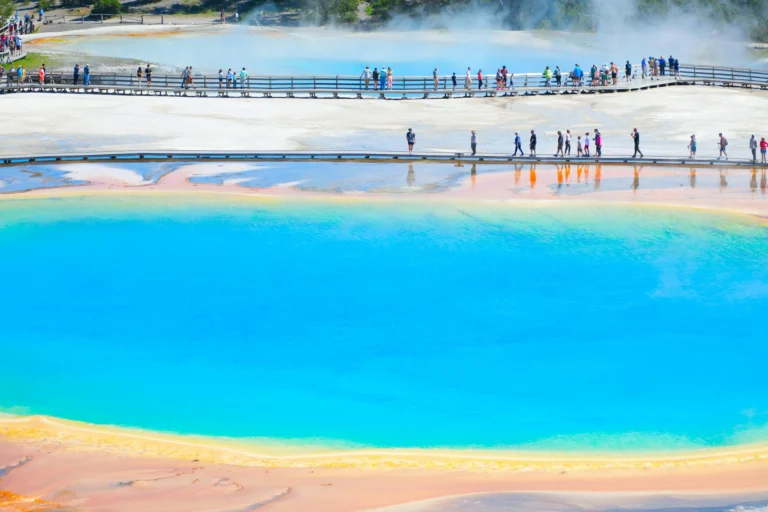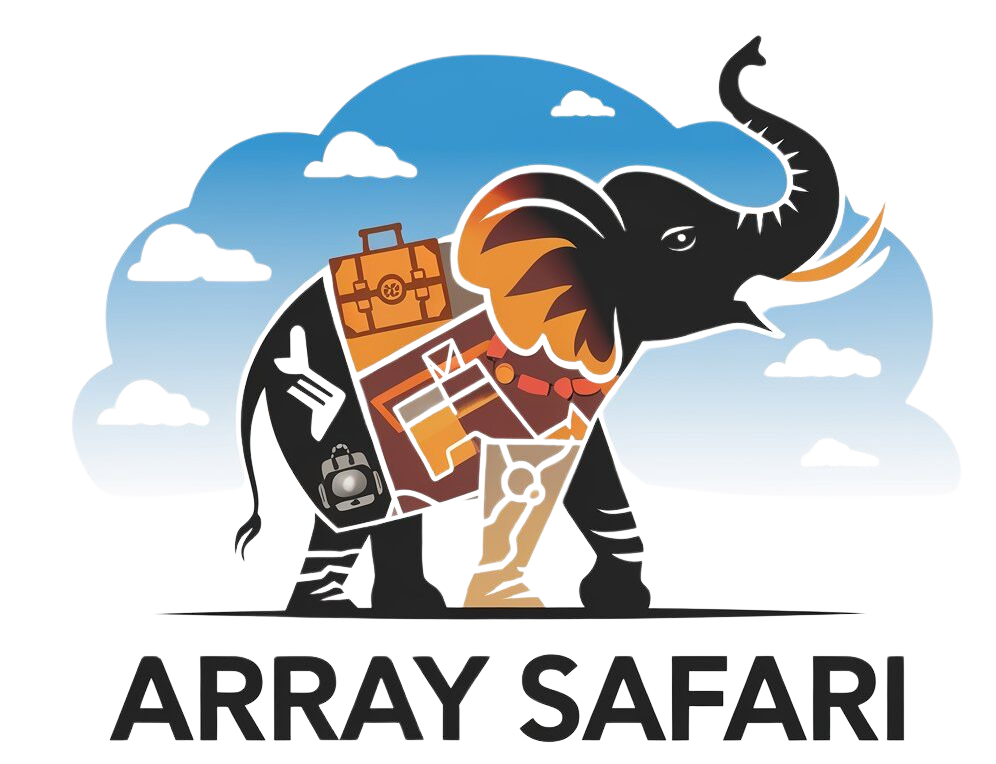Picture yourself walking down a trail that runs through huge granite rocks, snow-lined lakes, and huge trees. Isn’t it amazing and completely out of the world? That’s why John Muir Trail has to offer to all its tourists in almost all favorable seasons. It is a 211-mile masterpiece named after the legendary naturalist John Muir. This trail is a dream for extreme hiking because it is solitary, challenging, and offers breathtaking scenery.

About the John Muir Trail –
As derived from the John Muir Trail history, it is a renowned 211-mile long-distance hiking trail that transverses the stunning Sierra Nevada mountain range in California. It is a strenuous scenic adventure that passes through some of the most picturesque areas in the United States.
The trail was established in 1938 but many of the parts of it were popular trails used by Native American and pioneer people. Muir also used to visit the Sierra Nevada often and was actively engaged in the campaign to save these clean, wild landscapes. He was devoted to the mountains and consequently devoted his time to the establishment of both Yosemite and Sequoia National Park. This makes the Yosemite to Mount Whitney hike much more special.
The tour of John Muir Trail scenic spots is one of the most dreamed-of hikes by many hikers because of its amazing diversity. This trail starts in Yosemite National Park and includes famous sights of the park as Half Dome and Tuolumne Meadows.

It reaches picturesque peaks along the way, which present breathtaking features of mountainous terrain, including crystal-clear alpine lakes, great granite bowls, and sections of expansive meadowlands. The JM trail provides a loop trail and finally ends at the summit of Mt. Whitney, the highest peak in the lower 48 states, providing an expansive view of the wilderness.
Planning Your John Muir Trail Hike –
The best time to hike JMT is between July and September when the snow threatens to block the trail that has melted due to high sun rays. But before reaching there, John Muir Trail permits for wilderness are required. These are distributed based on the lottery system and people can receive these permits randomly as per the rules and procedures.
Make sure to schedule your transportation and bear canisters that are bought, rented, or resupplied at certain points of the trail. Resupply strategies include proper packing of meat items and planning in terms of interval caches & trip routing to confirm resupply bouts.

Gear and Packing required for John Muir Trail –
To prepare for the John Muir trail hike, the following essential gear for hiking JMT items need to be collected:
- A lightweight backpack,
- A good tent,
- Warm sleeping bag,
- Stove, and
- A water filter
Also, focus on gear that manages moisture, dries quickly, and can be used in conditions ranging from freezing to hot weather.
When it comes to lightweight gear, a recreational camper can be considered more effective and long-lasting. You can also consider getting lightweight tents, inflatable sleeping matt, and lightweight sleeping bags.

John Muir Trail Highlights and Attractions –
The John Muir Trail boasts some of the most breathtaking landscapes in the Sierra Nevada. Hike through iconic valleys like Yosemite Valley and Tuolumne Meadows, marvel at towering granite formations like Half Dome and Clark Range, & traverse Pristine Alpine lakes like Thousand Island and Garnet Lake.
Encounter diverse wildlife on John Muir Trail, including deer, black bears, marmots, and a variety of bird species. Immerse yourself in the serenity of high-altitude meadows, dense forests, & sparkling streams. Also, experience the grandeur of Sierra Nevada with complete excitement and Fun firsthand.

Safety Tips for Beginners Hiking at John Muir Trail –
Embarking on the John Muir Trail journey is a great adventure, but it is essential to prioritize safety. Here are some key JMT trail safety tips to ensure a safe and enjoyable experience:
- Bear Safety –
Cache your food and odorous materials in bear containers, bear-proof or with bear-proof lids; they should not cook or eat within 100 feet of a bear. Also, avoid touching or feeding the bears.

- Prepare Properly –
Do not start a trip without being prepared physically, and make sure you are experienced in back-country hiking.
- Carry a Water Filter –
It is expected that water sources that may be available along the JMT are most of the time not purified for drinking. Always have a water filter or purification tablets to save water from streams, lakes, and springs.
By understanding the evolution basin JMT and following the above tips, you can minimize risks & maximize your enjoyment of the trail. Remember safety is paramount, so always prioritize your well-being & the preservation of the wilderness.

The title “Explore More: Stories and Tips from the John Muir Trail” encourages the readers to explore the context associated with the John Muir Trail experience. Far from a simple narration of an event, it includes personal stories aside from the basic facts, the newest data, and suggestions from other mountaineers. The title’s emphasis on “stories and tips” suggests a blend of narrative & practical advice, making it appealing to both seasoned hikers and those new to the trail.
Experience of John Muir Trail
This blog would feature a variety of posts catering to:
- Personal Experiences –
The blogs consists of interviews with previous hikers who have been to the John Muir Trail. Such posts would include experiences on overcoming goals, achieving certain milestones, and thrilling moments to inspire aspiring hikers.

People can keep a close watch on the trail status, closure, permit status, and availability with the help of trail updates given by the blogs. These posts would assist the hikers to firm up their plans appropriately and thereby, make the hiking experiences as enjoyable as possible.
- Photography Tips –
Tours aimed at providing helpful hints when it comes to taking excellent shots of the mesmerizing landscapes accompanying the trail can be recognized through the blogs and posts.
The recommendations concerning the choice of the best camera settings and the positioning of objects & light conditions can also be received through these posts. With such topics, the blog would be most helpful to anyone who wants to learn more about hiking this trail.
- Wildlife Encounters –
Posts that are educational regarding the various animals that people may come across while group or solo hiking JMT. It comes along with advice on how to safely appreciate them & reduce impact.
By offering a diverse range of content on bucket list hikes to people, this blog becomes an invariable resource for anyone interested in exploring the John Muir Trail.

Frequently Asked Questions –
1.What is the right time to hike on John Muir Trail?
The John Muir Trail is best hiked during the time period of July and September. For these months, while the snowpack accumulated at high altitudes has mostly disappeared, the weather gets a little less harsh, with clear skies and temperatures not being very high or low.
However, it is advised that you should always review the trail conditions and weather forecast before a specific year because the conditions of the present year may be different from the next year, & so on.
2. How difficult is the John Muir Trail?
The John Muir Trail is considered a challenging hike, requiring excellent physical fitness and experience in backcountry travel. This trail involves significant elevation gain and loss, steep accents, and rough terrain.
It is important to be prepared for adverse weather conditions, such as snow, rain, and strong winds, especially at higher elevations.

3. What should be used personally as gear for the John Muir Trail?
To complete the John Muir trail, you will require the basic hiking equipment:
- a lightweight backpack,
- warm sleeping bag,
- a water filter,
- a good tent, and
- a stove
It is important to pack comfortable, robust, and non-slip shoes or boots & they should be made of as lightweight material as possible.
Also, you have to bring enough food and water for the entire duration of your trek since these supplies are relatively scarce on the trail.
4. Do people need a permit to hike the John Muir Trail?
Yes, you need a wilderness permit to hike the John Muir Trail. Permits are issued through a lottery system and demand often exceeds availability. It is recommended to apply for a permit well in advance, as popular sections of the trail can fill up quickly.

5. What are some of the topmost problems of hiking the John Muir Trail?
A few of the toughest things that should be expected during the hike of the John Muir Trail are the physical tests, the bad weather, and general planning. Even though trekking is a challenging exercise with numerous days of hiking and steep inclines, the terrain is rocky leading to fatigue. Also, the weather is quite challenging, which may greatly affect the general impression, & that is why one should be ready for everything.

Conclusion –
John Muir Trail is a very challenging yet exciting trail that will be fun and very interesting to hike. For beginner hikers, this trail may prove a bit difficult to crack but once the proper structure of the hike is understood, the route becomes quite achievable. So, what are you waiting for? Pack your bags, get your permits, and set out on this exciting and once-in-a-lifetime journey of your life.




